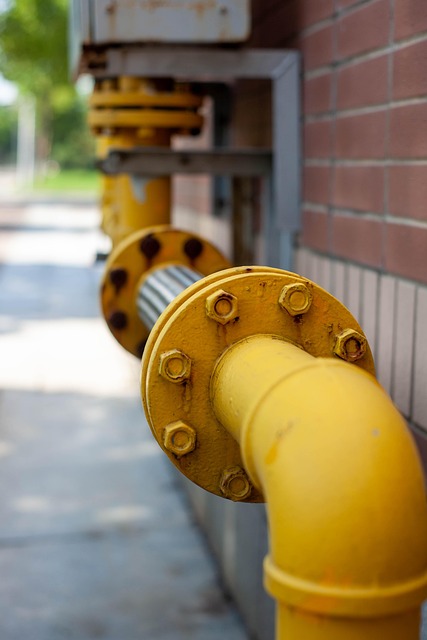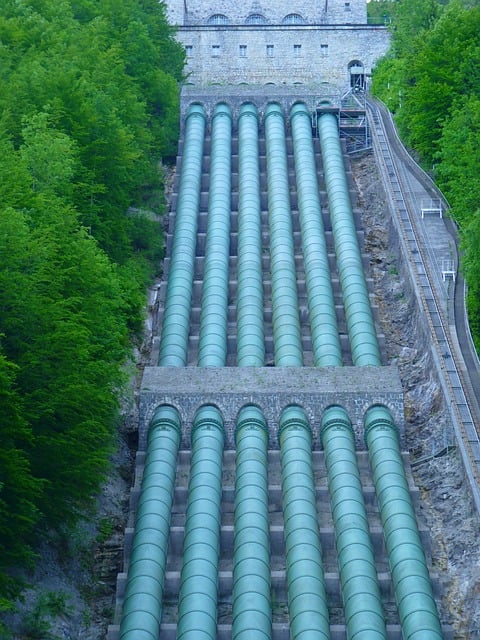DIY pipe insulation is a simple yet effective way for homeowners to boost energy efficiency, prevent pipe freezes, and save on costs. Using materials like fiberglass, foam, or mineral wool, this project involves cutting and wrapping pipes with insulation, smoothing out wrinkles, and sealing gaps with thermal tape. Essential tools include measuring tape, scissors/utility knife, gloves, and goggles. By insulating pipes, homeowners contribute to sustainability while reducing energy waste and protecting plumbing systems.
Looking to slash your energy bills and protect your pipes? DIY pipe insulation is an effective, cost-saving solution. This guide breaks down everything you need to know. From understanding why pipe insulation matters for your home’s efficiency to gathering the right materials and tools, we’ve got you covered. Follow our step-by-step instructions to effectively insulate your pipes yourself and watch those savings accumulate. Discover how DIY pipe insulation can make a real difference in both your wallet and your comfort.
- Understanding Pipe Insulation: Why It's Essential for Your Home
- Gathering Materials and Tools for Your DIY Project
- Step-by-Step Guide to Effectively Insulate Pipes Yourself
Understanding Pipe Insulation: Why It's Essential for Your Home

Pipe insulation is a crucial component of home maintenance, often overlooked but with significant benefits. In simple terms, it’s a protective layer wrapped around pipes to regulate their temperature. This is essential for several reasons; firstly, it prevents pipes from freezing in cold weather, which can lead to costly bursts and leaks. By keeping water at a consistent temperature, insulation also reduces energy wastage as heating or cooling systems don’t have to work overtime to maintain the required pipe temperatures.
DIY pipe insulation is an accessible project for homeowners looking to save on energy costs and enhance their home’s efficiency. It’s a relatively simple process that can be completed with the right materials and some basic tools, allowing you to take control of your energy consumption and contribute to a more sustainable living environment.
Gathering Materials and Tools for Your DIY Project

Before you begin your DIY pipe insulation project, it’s essential to gather all the necessary materials and tools. This includes insulating pipes, which can be made from various materials like fiberglass, foam, or mineral wool, each offering different levels of insulation and flexibility; duct tape, a crucial binding tool that secures the insulation in place; a measuring tape for accurate sizing; scissors or a utility knife for trimming the insulation to fit; and finally, thermal tape (also known as pipe wrap) designed specifically for sealing and enhancing heat retention. Additionally, consider having gloves and goggles on hand for safety during installation. With these essential items, you’re well-equipped to take on this project and achieve better energy efficiency in your home through DIY pipe insulation.
Step-by-Step Guide to Effectively Insulate Pipes Yourself

Insulating your pipes yourself is a straightforward process that can help you save on energy costs and protect your plumbing system. Here’s a simple, step-by-step guide to DIY pipe insulation. First, gather your materials: pipe insulation in the appropriate size and thickness, scissors or a utility knife, and a measuring tape. Start by cutting the insulation to fit around each pipe using sharp scissors or a knife. Ensure you measure accurately for a snug but not too tight fit. Next, unroll the insulation and position it around the pipes, filling any gaps with extra material. Use your hands to smooth out any wrinkles or air bubbles to ensure maximum efficiency. For hard-to-reach areas, consider using a pipe insulation sleeve that fits over the pipe, providing both flexibility and protection.
DIY pipe insulation is a cost-effective and efficient way to protect your pipes, reduce energy costs, and contribute to a more sustainable home. By following the simple steps outlined in this guide, you can easily insulate your pipes and reap the benefits of improved energy efficiency. Don’t wait for winter – start insulating today!
